Ik Mik Loreland, Dutch children’s favorite, revamped.
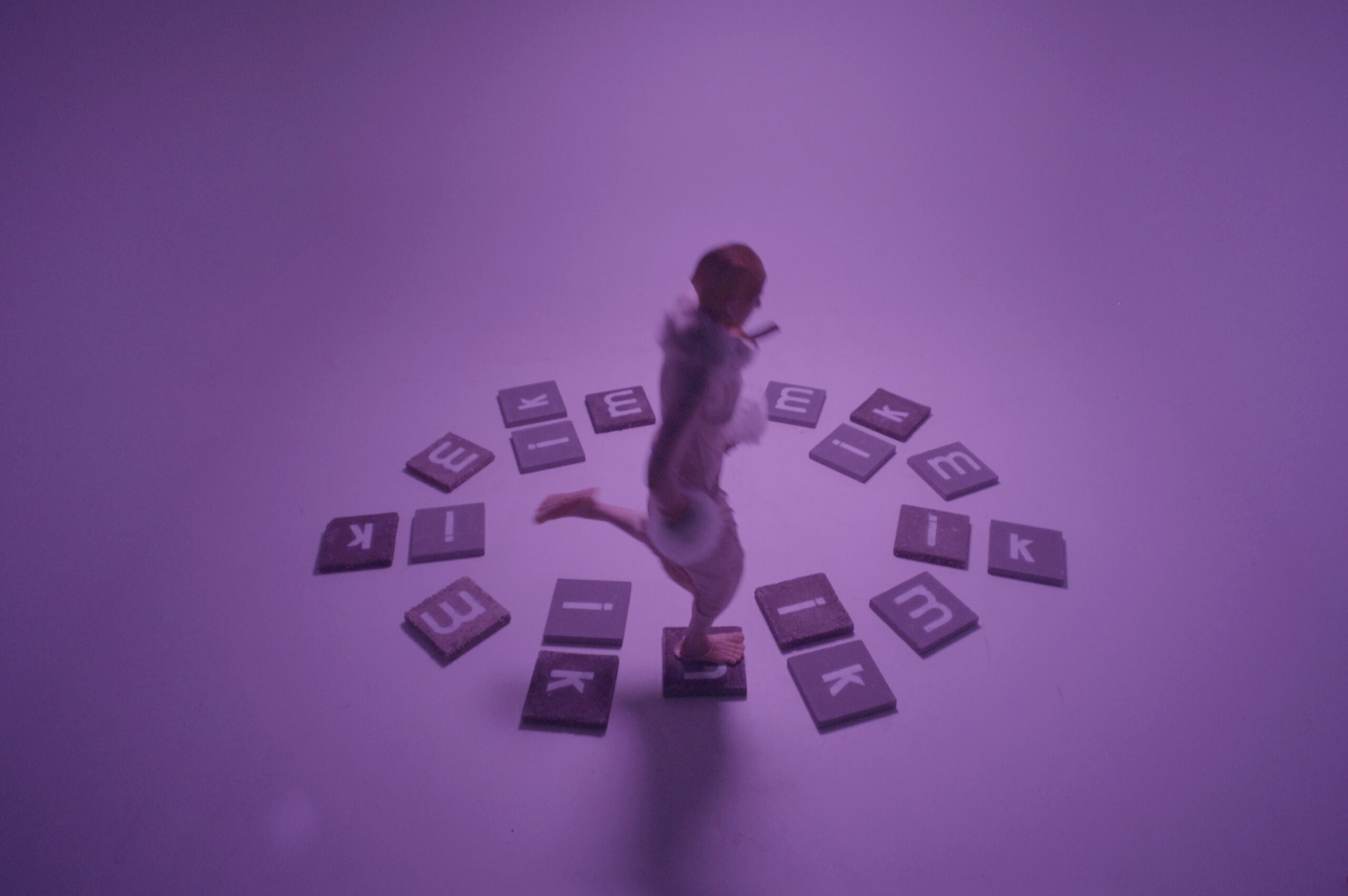
Dutch designer Pablo Salvador Willemars has always been a disruptor. Known for their out-of-the-box graduation collection that turned mundane train travel into avant-garde fashion statements, Pablo has now ventured into filmmaking. After showcasing their work at Lichting, London Fashion week, honing their craft under Duran Lantink, and creating editorial looks for HEMA with household objects, the multi-talented creative loves to dive deep into dutch heritage while always bringing their vision – one that can pull everyday artifacts into high fashion realms.
Together with Klaar Straatman and Lianca van der Merwe, Pablo created m i k. The film reimagines the world of Ik Mik Loreland, a beloved Dutch children’s show, through an exploration of language, dyslexia, and the power of communication. With a fresh narrative perspective and the original actress Marjolein Macrander reprising her role, a unique perspective is drawn out, reflecting on language as a barrier, and the fashionable possibilities of childrens TV —minus its infamous, polarizing character, Karbonkel.
As Pablo heads into their FASHIONCLASH premiere, we sit down to talk about switching from fashion, to film, to fashion, about letting go, and finding inspiration from hardships.
We all remember your fashion presentations, focusing on the NS and other absurdities in traintravel. How did you get from fashion designing into filmmaking, and specifically this childrens programme?
Switching up to filmmaking happened because I signed up through the film program of Fashion Clash. Film is really a medium that I’ve never dipped my toe into. I thought it was very exciting because I’m so focused on still images, to now see how my vision would translate into moving image, and see what comes out of a collaborative project. And from my previous projects about the NS, I think I’ve just realized that I just love making work inspired by the Netherlands, nostalgia and my own youth, and things I see on a daily basis. Of course, the political climate right now is not great, but still there are so many beautiful stories to be told about this lowland (read: tiny, below-sea-level) country. So that’s also how I came to this idea for the film about Ik Mik Loreland.
You also mentioned m i k is rooted in a very personal journey, especially in exploring how language can sometimes feel like a barrier. How did your experience with dyslexia shape m i k and its direction?
Yeah, going into the film project I thought it would be very interesting to go into this topic of language and my dyslexia that I’m still kind of struggling with – sometimes not being able to express myself, and also the feeling that language or the lack of knowledge or understanding of how to write can be weaponized. I struggled with that in art school and just basically any school I’ve been to. And then I kind of went back to the first moments of learning a language and learning letters and getting an understanding of this. And that’s this Ik Mik Loreland TV program that teaches children around the age of six letters and words in this storytelling way.
Do you feel like looking back now at how dyslexia has shaped you or your world that it might have also been a part of your creative journey? Do you feel like not always being able to comfortably express yourself in words made your visual mind stronger? I think it for sure had an influence. When I was writing the screenplay and all of that, it didn’t flow that much. But when I started drawing the storyboard, the full film was there in a day. And the storyboard also didn’t change much. So on the shooting days, I just kept telling everyone, just do it like the storyboard. And it’s exactly framed like how I drew it in the storyboard.
I think that the lack of ‘written’ story really shines through in the visual. Also because it’s my first time doing a film, half of the time I was also processing what these documents would be called and how to structure them. And that was also a very exciting process because it was real in the end. And the actors and the director of photography could understand what I was trying to create or what we were trying to create, so that felt rewarding.
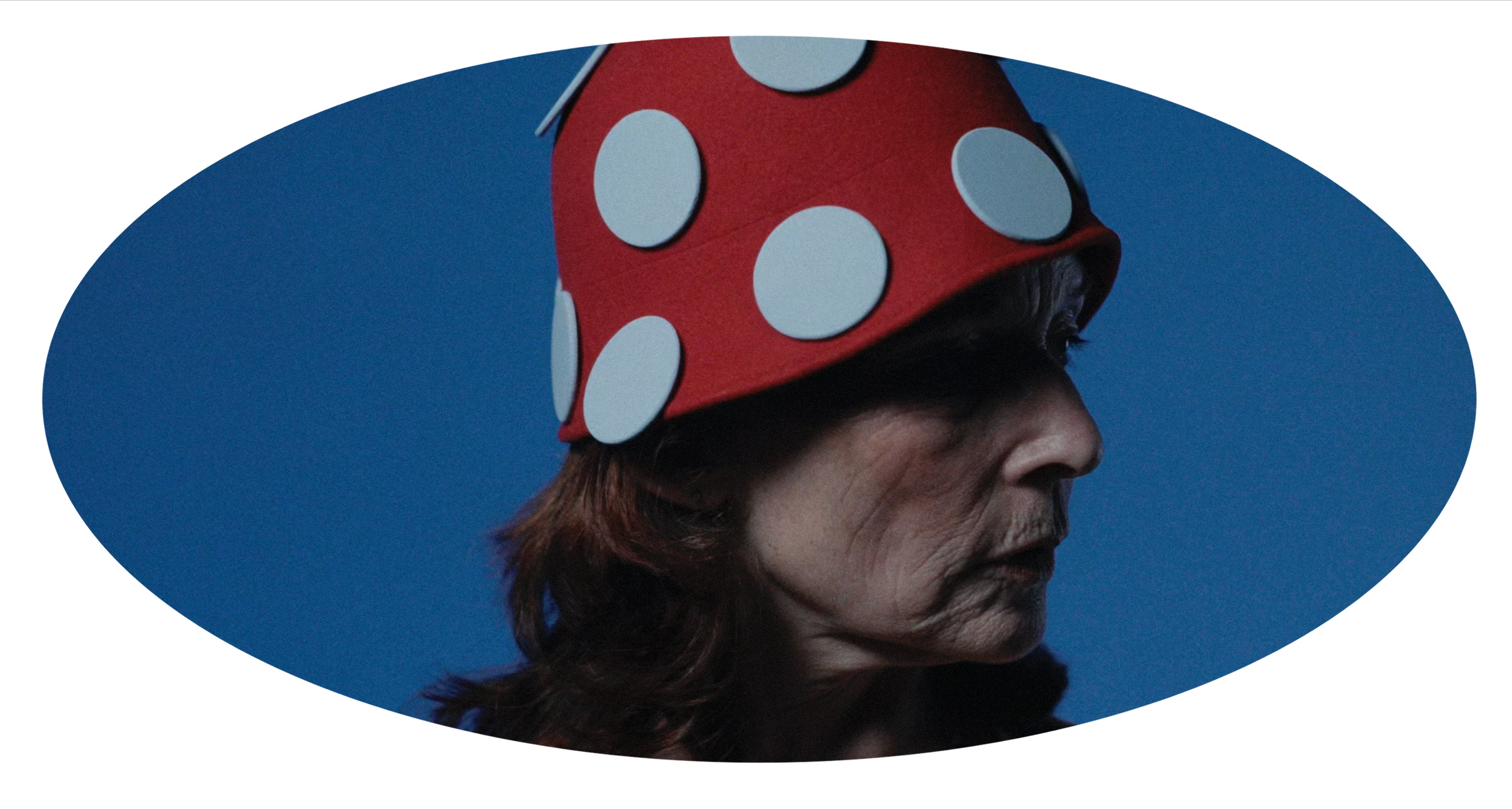
Obviously, a large group of our generation was traumatized by the scary character in IK MIK LORELAND, called Karbonkel. As he’s the one with the problem learning to read, portrayed as the villain when he’s actually the victim, why did you leave him out of the video?
I did because I didn’t find it interesting to portray him as this villain character, where I maybe even felt that the language could be the villain more than him. Especially taking into account that there’s some racial undertones in the character. It’s not really helping.
I see why you would leave that part out. The film m i k seems to explore a unique language of its own— can you tell us how the idea to focus on non-verbal communication developed?
The film aims to highlight the profound ways we build connections and communication beyond language. The story follows m i k, on a journey where she encounters various characters who embody different forms of non-verbal communication.So the only sounds and letters that appear in the film are the name of Mik. ‘Ik’ meaning ‘me’ in dutch, really highlights this is about her finding herself.
So you steered away from making it educational.
Yeah. That was just the starting point. Maybe I just wanted to help myself – making sure that I didn’t have to write a whole script filled with dialogue, lol.
What was it like to work with Marjolein Macrander, the original actress from Ik Mik Loreland, and have her embody the character of m i k in a completely new light?
It was super special. We had our first meeting in the Eye Museum, and to see this TV personality that you have seen as a child now come to life, and her having the same mannerisms… For her it’s been 30 years since filming all this. So she was also recollecting all these memories, started singing the title song and sharing so many of the behind the scenes and her favorite characters.. And it was also very special to then have her act out these scenes. The scenes of our film are very much based on the stories in the original TV show. So that was also very special to see her embody this same scene but through a different light and also with different emotions.
What was your favorite scene to do with her?
I think the last scene. It’s the character a a p teaching m i k how to hopscotch. And it was just so so cute to see them going in endless ovals.
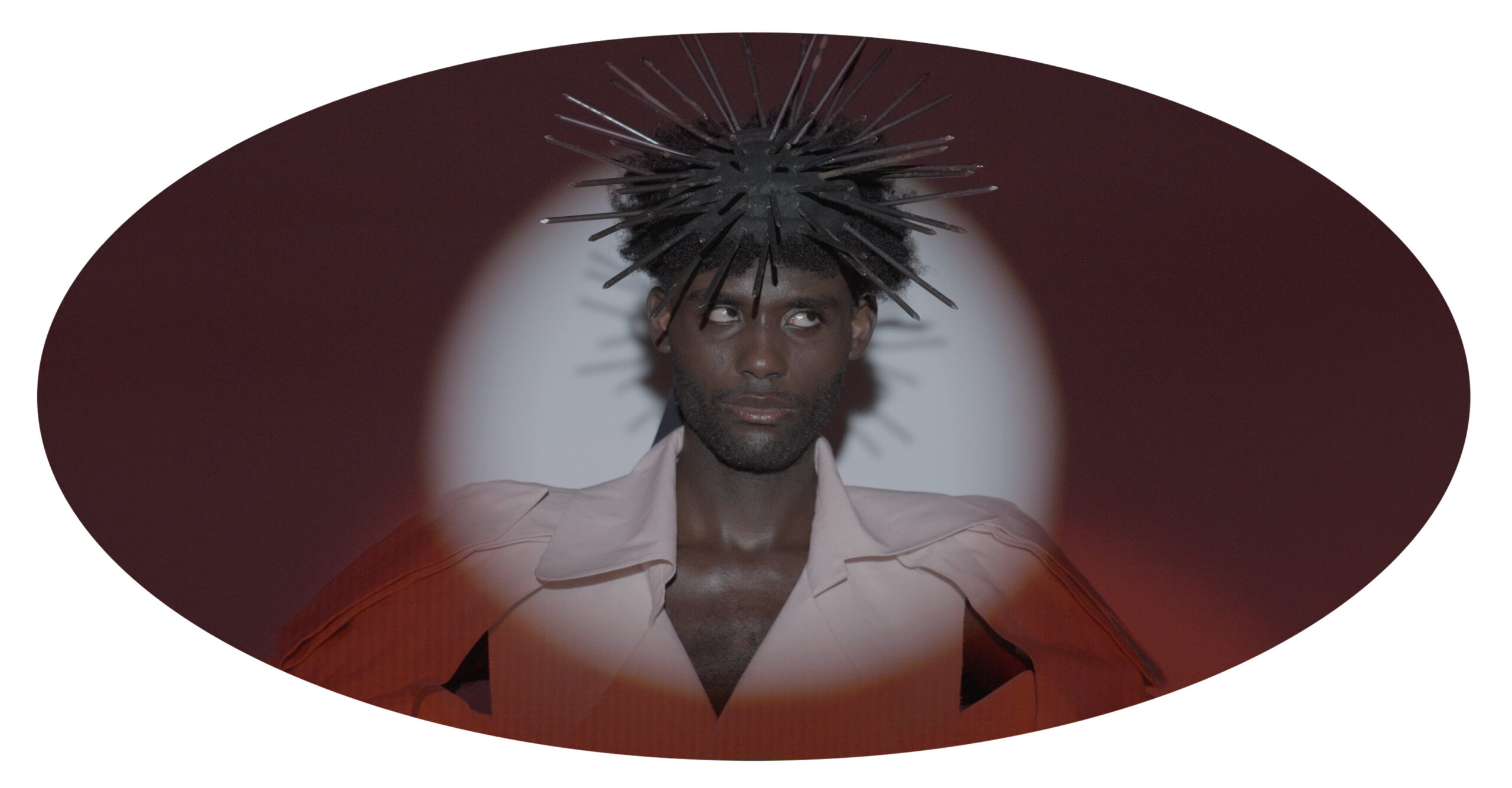
You mention connecting with Arien de Vries, one of the original costume designers for Ik Mik Loreland. What was the most insightful takeaway from that conversation that informed your costume designs?
She told me that I had to have fun and see it through the eyes of a child. And I think I did that by trying different color palettes and schemes that I wouldn’t normally go for. She told me that they also worked with what they had. Ask yourself, if you want to portray a monkey, how much do you need to add for something or someone to become a monkey?
And how did you then translate the original costume design into your new fashion film?
I translated it, but I wouldn’t even say I made it into a modern version, because the silhouette is very ’20’s-inspired. Colour-wise I stayed close to the original, the godawful print on her practical vest was abstracted into a delicate, physical manor with strips of different materials. In the film she is discovering the self and places the letters of her name onto her body with velcro. I also reinterpreted her original red and black dotted cap to a red felt hat, with painted blue circles.
Each character m i k encounters seems to reflect a different form of communication or self-reflection. How did you approach designing these characters to visually embody these abstract concepts?
There are different types of communication. Facial expressions, eye contact, and intrapersonal, the communication with oneself. So it was important to not diverge too much from, say, if we want to focus on facial expressions. It was really that the script led the costumes and then in the end, the costumes led the visual progress of the film. For instance, r e u s, it’s this big giant, wearing a two meter long trench coat that with projections is colored in red, but he’s also a door. Through eye contact, he gives m i k access to enter his door. It’s really a play between garment, actor and the story.
And which character do you think was your favorite in the end, costume-wise? I think r e u s is my favorite. I also made him this spiked headpiece. it’s all really drawn from the original costume. But then again, I wouldn’t say modern. I wouldn’t even say in my personal taste, but just a way for the story of the film to unfold through colors, shapes and movement.
Tell us about the three m a a n k r a t e r s and how you chose their look, particularly using garments from the Dutch National Opera & Ballet?
These moon craters that also really draw from the original m a a n k r a t e r s that are mostly like flesh beings, like one with the ground. I really felt like they could have a statuesque presence in the film. And then I happened to stumble upon these huge felt coats that really resembled this, a high collar, creating distance from the body. These collars are also what makes the garments so statuesque, that they stand away from the body. But because of that, they also focus so much on the person inside of them. So it also really enhanced their facial expressions.
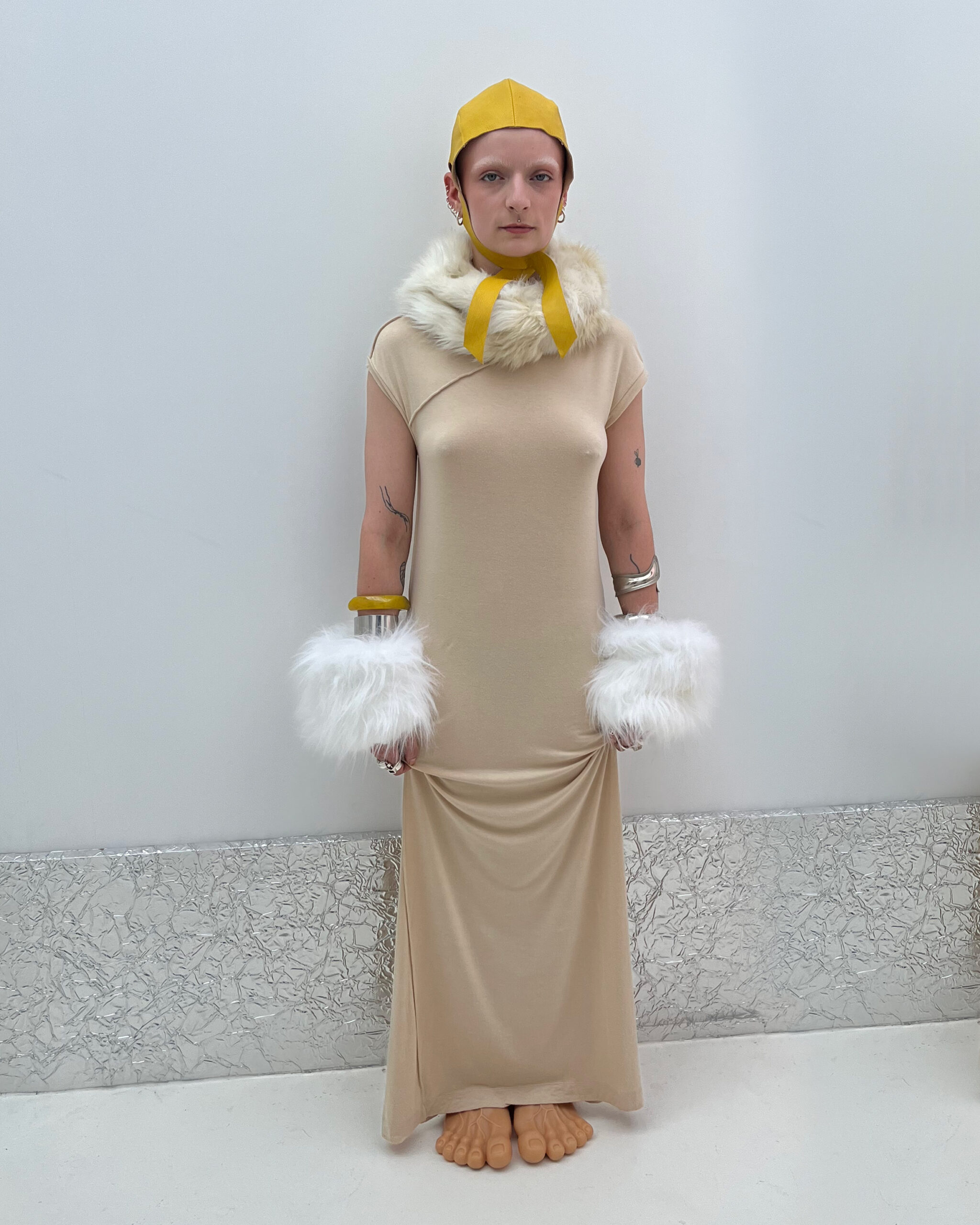
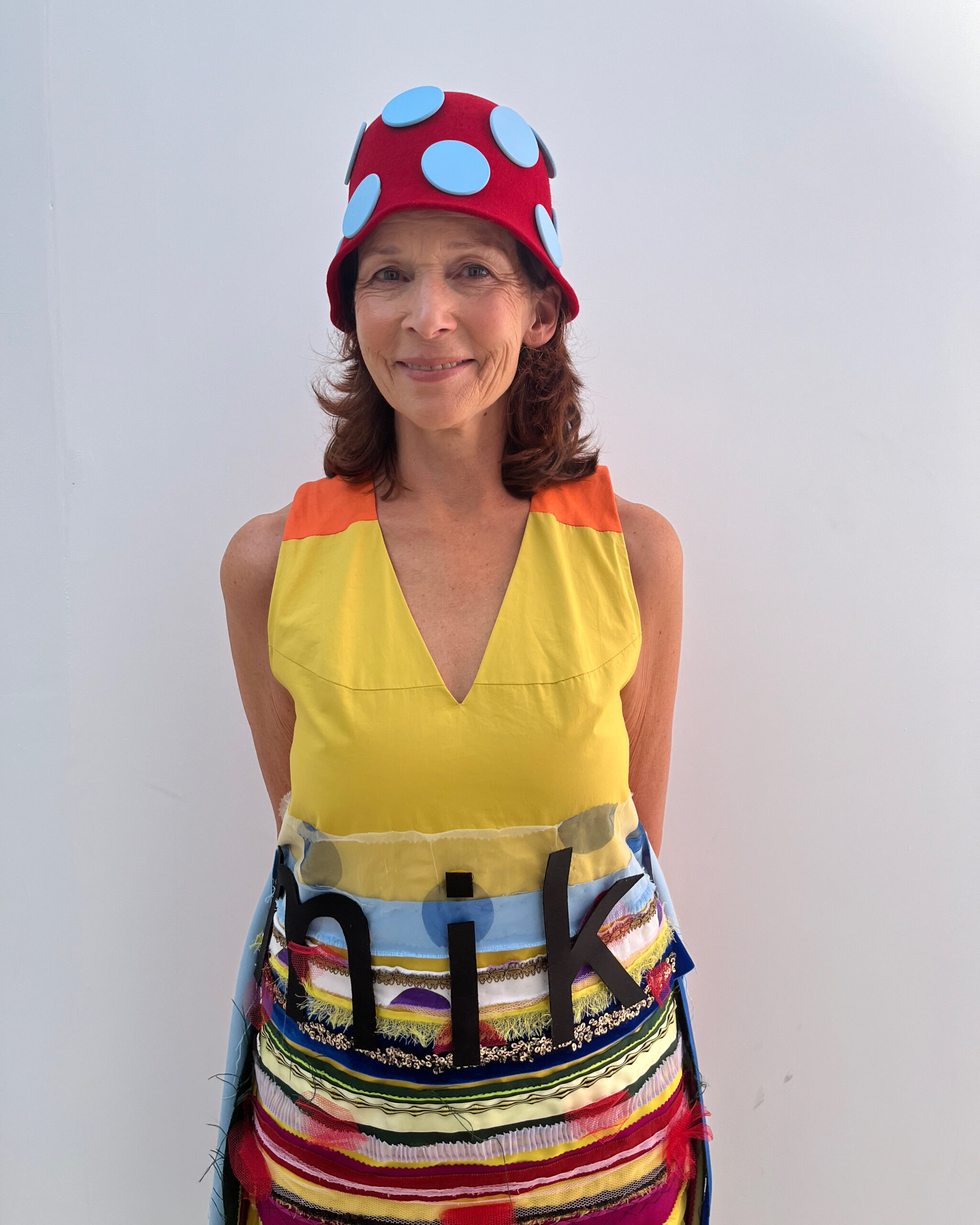
And what did you take away out of making a fashion film?
It’s so much work.
What was the hardest part in the whole process?
The hardest part was letting go. I’m a control freak. It was a project with a lot of people involved. Giving everyone the freedom to also really truly do their expertise. It was such a lovely team that I could really trust. But sometimes it’s hard to trust people when I don’t know how to explain what I want from people because I don’t I don’t speak film vocabulary yet, I don’t have the language. But, it came out stunning and they’re all superstars.
What part of this are you going to take further in your artistic practice?
I do really enjoy costume design and also thinking in characters and the narrative of a film that can then lead to the costumes. Because I do sometimes miss that in fashion. Also with what I design, I don’t design for a muse or a client. And now there is a face and a person and a story of the wearer themselves.
Yeah, that’s nice. Do you think that will change the way you would design in the future?
It might actually. Because now I also designed the character. So it was still very much being in control of the story and what they had for lunch and their favorite color. But I think it might influence the way I continue working thinking of a character that would wear this garment.
With m i k premiering soon at the FASHIONCLASH festival, what are you hoping audiences take away from this film?
I hope that the audience gets to experience the joy we had making it and also the risks we took. Because it’s not an average fashion film that’s solely focused on being pretty.
Words by Pykel van Latum
Written and directed by Pablo Salvador Willemars
Art direction by Klaar Straatman
Creative producer Lianca van der Merwe
Starring Marjolein Macrander as m i k
k r a t e r m a a n a Suzanne Arntz
k r a t e r m a a n b Clarien van Harten
k r a t e r m a a n c Nicolette van der Linden
r e u s Classic Noble
a a p / p o e s Lena Nießen
Director of photography Yannick Giraud
Line Producer FASHIONCLASH
Recording manager / guidance Flo Meijer
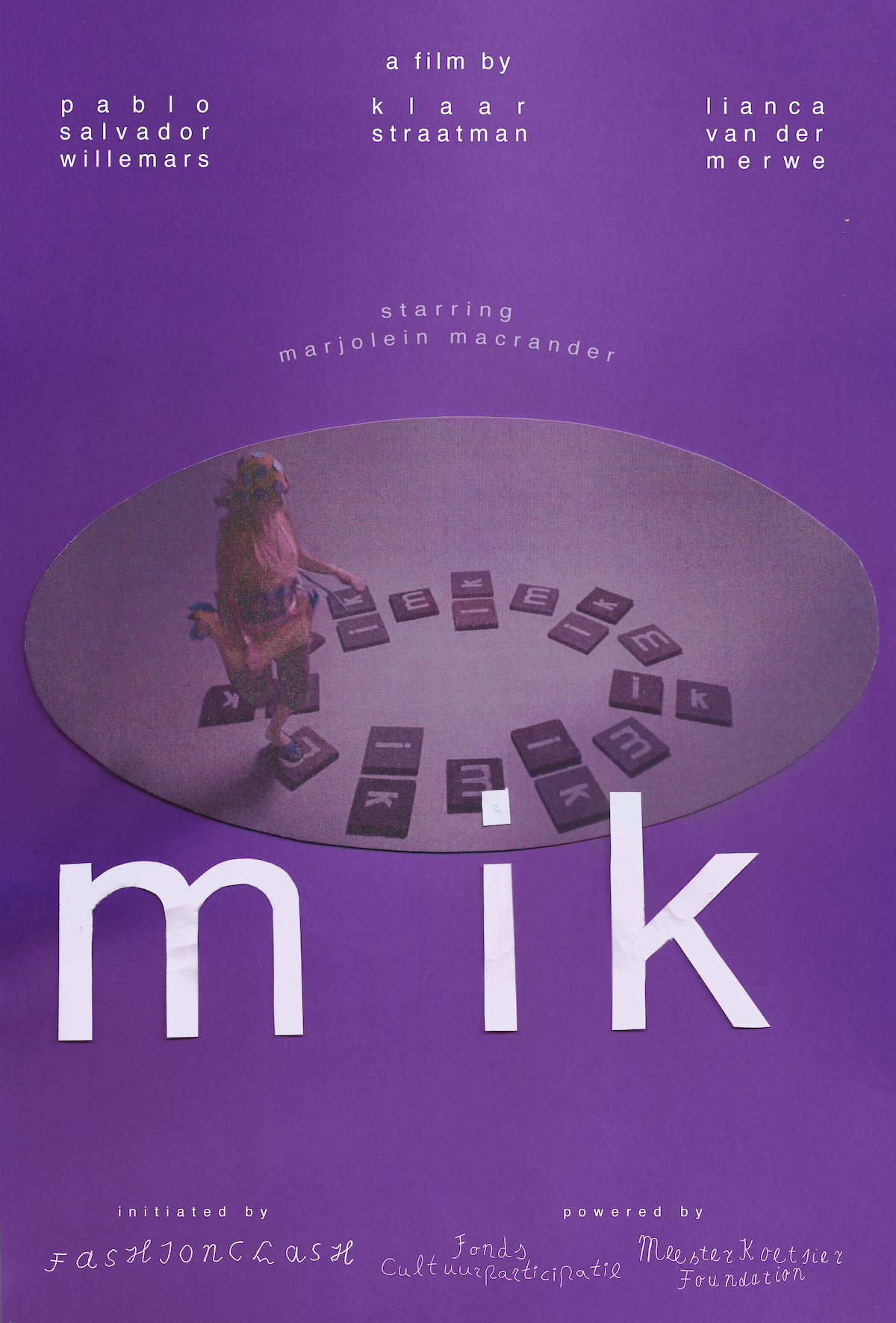
Notifications